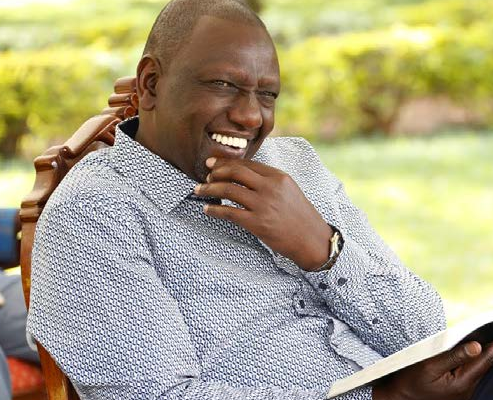As he starts the last stretch, Ruto deploys a familiar playbook

Every day over the past two weeks, the Deputy President’s schedule is sent out by his communication team.
His weekly schedule is released at the start of every week to media houses and also distributed via WhatsApp, mostly to journalists’ groups, which ensures that any journalist with a smartphone is likely to know with a few taps on their phone where William Ruto is going to be.
This communication strategy is part of the playbook deployed by the Deputy President’s team as he ramps up campaigns with about seven months to the General Election.
As he increases his activities, the Deputy President has deployed the same strategy as the Jubilee Party in 2017, effectively using the same playbook that helped create a good impression by the President’s party.
One of the key tactics is to visit as many constituencies as he can and stop at every trading centre. His communication team ensures that the photos, footage, soundbites and stories make it to every bulletin on national and regional channels.
He has also begun to tailor his messages to the regions he visits, even as he maintains the overall narrative.
In the Western region over the past few weeks, his message was around ensuring that farmers make money from their produce and to facilitate that by lowering the price of inputs through government subsidies.
This is made possible through research and consulting the locals and their leaders, effectively communicating that he understands their needs.
The DP’s communication team has made it a point to alert the media of his activities and have succeeded in selling the narrative that he has the stamina and resolve to keep going. This belies the fact that he appears to have the finances to keep the show on the road, as campaigns are often a massive logistic undertaking where vehicles need to be fueled, recess and research undertaken and allowances paid to keep staff ferried and fed. The DP has also made a habit of making a donation wherever he goes – to youth groups, women groups, bodaboda groups and those sort of gatherings.
The Jubilee Party played out the same routine ahead of the last General Election where at one point it was reported that they had addressed 700 rallies across the country.
This was in turn compared to the campaign strategy deployed by Raila Odinga, who resorted to meetings in Nairobi with his allies followed by press conferences, which created the impression that he did not have the energy, and finances, to tour the country.
Mr Odinga has so far been meeting delegations after he formally launched his Azimio la Umoja campaign late 2021. He is also banking on the support of the politicians from the Central region who have backed him. He has also established a board to handle the campaign and its complexities from fundraising to organizing meetings.
Dr Ruto’s mettle was tested this week in the National Assembly, where his troops fought, even literally, to stop the changes to the Political Parties Act meant to make it easier for coalitions to be formed ahead of the General Election.
While the Handshake team won that first phase, and the contest will now move to the Senate, the contest has given both leading candidates time to consider their options for running mate. It increasingly looks like their decisions can only be made once coalitions are firmed up.
For the former Prime Minister, the headache is in convincing the politicians he is pursuing that he will hold up his end of the bargain. He has not been good to his partners in coalitions over the past 10 years in the Coalition for Reforms and Democracy (Cord) and the National Super Alliance (Nasa).
For Dr Ruto, his dilemma is who to pick from amongst the mid-level politicians who surround him, many of whom are yet to attain the age, experience and influence that would attract additional voters.
As they work out their arithmetic, what’s for sure is that both leading presidential candidates have their work cut out for them over the next six months.

